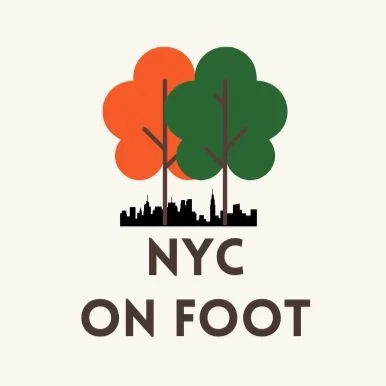Explore NYC’s High Line: The Ultimate Walking Trail Experience
Discover New York’s Best Elevated Walk.
New York City is a walker’s paradise. You may come for the pizza, bagels, and Broadway, but you’ll stay for the strolls. If you’re searching for a top-notch walking experience outside the city’s iconic parks, river walks, and bustling streets, the High Line should be at the top of your list. This 1.6-mile elevated trail offers breathtaking views of the city, surrounded by vibrant foliage, gardens, and unique glimpses into the city’s architecture and culture. At times, you’ll feel like you’re walking through the backyards of wealthy residents…because you are!
Where is the High Line?
Starting at Gansevoort Street and Washington Street in Chelsea, the High Line runs to Hudson Yards at 34th Street, between 12th and 11th Avenues. As you walk, you’ll encounter stunning vistas over Manhattan’s busy avenues, beautifully curated floral displays, and one-of-a-kind urban landscapes that blend nature and city life into one incredible path.
For those looking to get their steps in, you’ll be pleased to know that three walks along the High Line will get you precisely 10,000 steps. You’ll hit your step count without interruptions from cars, traffic lights, or pesky bicyclists.
What’s on the High Line?
There’s a lot to uncover on your High Line adventure. As you wander through, you’ll get great views of the Hudson River, Hudson Trainyard, and the iconic Vessel, a beehive-shaped structure that if nothing else, makes you go “Oh? That’s cool.”
Besides the stunning viewpoints of the outside world, the High Line is sprinkled with fun sculptures and artwork to admire along the path. Some are prettier than others…like Foot Fountain, a foot-shaped sculpture and sprinkler with tongues sticking out of it.
The Vessel
Foot Fountain
The High Line participates in the city’s mission to provide sustainable green life for all who wander through. The gardens on the High Line were designed to reflect the cycle of life and death. This setup was meant to allow walkers to experience something wild and natural to complement the urban life surrounding the trail.
Each Garden has a name and a theme. My favorite section is the Flyover garden area between 25th and 27th Streets. Flyover feels like the closest thing to a rainforest you’ll find on the streets of New York.
For food and drink, the High Line will be at your service. You’ll find Shake Shack and other food vendors along the way depending on what day and time you visit. When you exit at 34th Street, you’ll stumble onto a strip lined with hot dog carts ready to provide on-the-go meals and refreshing beverages. You’ll also be a hop, skip, and a jump away from the Hudson Yards food courts where you’ll find mini food havens such as Little Spain.
The Flyover Garden
What’s the history behind the High Line?
Similar to digging in an old burial ground, each step on The High Line will reveal hidden historical secrets of the city you can’t find anywhere else. The pathway sits where the old New York freight line once operated, leaving behind remnants of the railroad and its complex legacy. The park opened in 2009 after residents advocated for the landmark to remain intact and avoid demolition.
However, the functions of this trail can date back to the 1800s when the New York Central Railroad used the rail line to deliver food to lower Manhattan. This area of the city was labeled “Death Avenue” due to the dangers imposed by the railroad and the 540 people who were killed on the tracks. In other words, before there were electric scooters to knock pedestrians off their feet, there was a rail line.
The treacherous nature of the railroad prompted the “West Side Cowboys” to patrol the area and warn pedestrians of ongoing traffic. It wasn’t until the 1930s that the first elevated train ran on the High Line and saved the city from more devastation. This line was known as the “West Side Elevated Line” and ran alongside the buildings to deliver produce, meat, and dairy products throughout western Manhattan.
This was all fine and dandy until, sadly, trucking killed the railroad star. In the 1960s—80s, the influx of trucks rendered the rail line unessential and the bottom part of the line was demolished. And in the 80s, the whole operation shut down. In later years, Peter Obletz formed The West Side Rail Line Development Foundation and began to preserve the High Line. Over the years, the landmark was developed more and more due to demand by residents who found it to be the ugly duckling in an otherwise lovely area.
In 1999, Joshua David and Robert Hammond founded Friends of the High Line which helped flourish the aesthetic of the High Line with wildlife and greenery galore. In 2009, after Mayor Bloomberg approved and CSX Transportation granted ownership of the structure to the City of New York, the park opened and became the High Line as we know it today.












